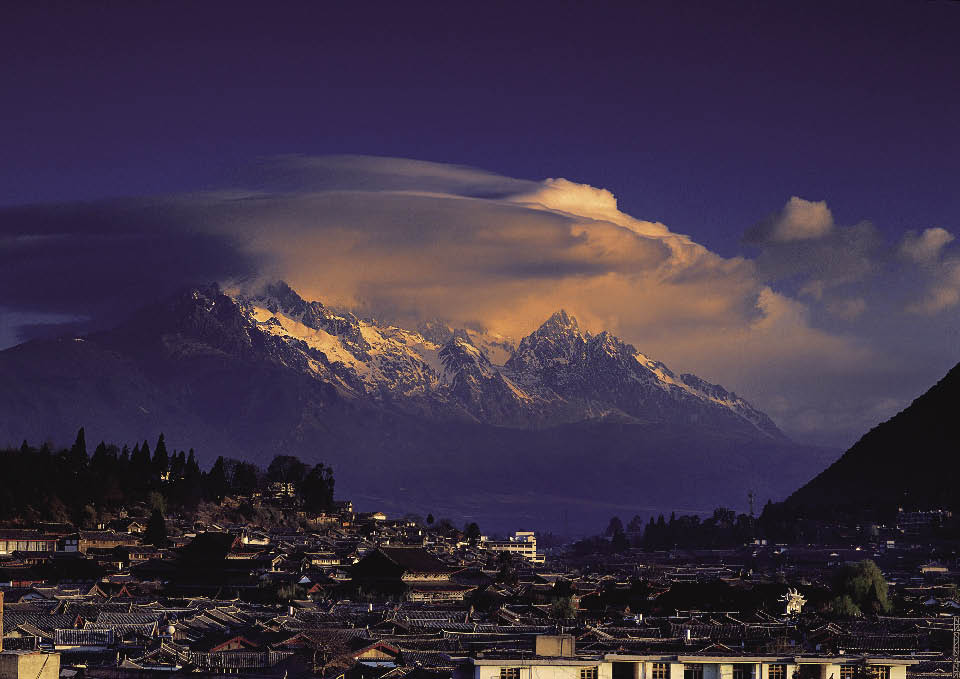The Moirig Snow Mountains are located in Deqen County, Deqen Tibetan Autonomous Prefecture in northwestern Yunnan Province. The main peak, Mount Kawagebo (also known as Mount Prince), is 6,740 meters above sea level, making it the highest mountain in Yunnan. Around it there are 13 peaks whose altitudes are over 6,000 meters above sea level. This spectacular group of snow-capped mountains stretches for several hundred kilometers.
The Moirig Snow Mountains are famous for their magnificence and mystery. Back in the 1930s an American scholar called them the "most beautiful mountains in the world." It is worth mentioning that due to its complex geological structure and changeable weather, Mount Kawagebo has never been scaled by any person. From the early 1920s to 1996, mountaineering parties attempted to reach its top, but all failed. After 1996, the government prohibited mountaineering in the region.
Lianhua (Lotus Flower) Temple at the foot of Mount Kawagebo is the nearest and best spot from which to view the Moirig Mountains. On the southern slope of Mount Kawagebo there is a 1,000-meter-high waterfall. It is especially magic in summer, when melted snow pours down the peak, providing pure water pilgrims regard as sacred. They shower in the fall to attain good luck.
There are many alpine lakes in the gullies and forests, where visitors remain silent for fear of offending deities. A well-preserved forest is regarded by Tibetan Buddhists as a sacred place.
The glaciers are also very famous. At the foot of Mount Kawagebo there are many glaciers and moraines. Due to high rainfall and warm temperatures, the glaciers are very active. During the rainy season they stretch to the forests at 2,600 meters above sea level, while during the dry season they melt and retreat to an altitude of 4,000 meters. These are rare modern monsoon marine glaciers.
 |
| The Yulong Snow Mountains, with Lijiang City down below. |
